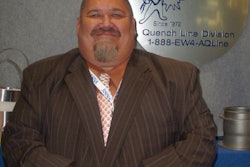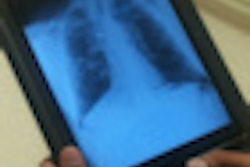Although PACS has yielded substantial benefits, it has also significantly altered the radiologist-clinician relationship. Without the built-in daily interaction required in the pre-PACS world, radiologists now need to cultivate these relationships proactively, according to researchers from the University of California, San Francisco (UCSF).
From a medical anthropological study, the UCSF team found that because of PACS, clinicians are increasingly comfortable with their image interpretation ability and would be unlikely to consult with radiologists unless they had a solid professional relationship. As a result, radiologists must build trust to maintain their role as imaging experts, according to Allison Tillack of UCSF.
"Radiologists must capitalize on existing opportunities to interact with their colleagues, as well as create new opportunities for interaction," Tillack said. She presented the findings during a scientific session at the 2010 RSNA meeting in Chicago.
The researchers sought to examine how PACS adoption has affected professional relationships among radiologists and clinicians and the role of the radiologist as a member of the patient care team.
With this purpose in mind, the study team utilized concepts from medical anthropology, a subset of sociocultural anthropology. Medical anthropologists are interested in how the health of individuals and larger social groups are affected by interpersonal relationships, as well as cultural and social norms, according to Tillack.
This type of research is qualitative in nature, with participant observation as the primary research method. Being placed directly into the research context, the ethnographer is embedded into the study population, which allows the development of relationships of trust and movement beyond rhetoric offered to a perceived "outsider," according to Tillack.
Using this approach, the study team wanted to characterize the nature of changes in clinician-radiologist relationships following the adoption of PACS. They also wanted to suggest possible causes and effects of these changes, as well as develop suggestions for enhancing the radiologists' role in clinical medicine.
In the pilot project, the researchers observed for three months a small sample of radiologists and a community of clinical specialists who rely heavily on imaging in their work, Tillack said. This included observing interactions in reading rooms, during multidisciplinary conferences such as tumor boards, and on rounds.
Semistructured interviews were also performed with 10 radiologists and five clinical specialists, focusing on perceptions of radiologists' roles before and after PACS and the perceived changes in the nature, substance, frequency, and place of radiologist-clinician interaction before and after PACS, Tillack said.
Extensive archival review of relevant scientific and popular literature was also performed. In the data analysis phase, the team analyzed verbatim transcripts and ethnographer field notes for recurrent themes and patterns in behavior and speech.
Less interaction
The researchers found that all of the radiologists -- who had a broad range of experience levels -- believed that they interacted much less frequently with clinician colleagues after adopting PACS.
"And that as a result, they [believed] they were less likely to have relevant clinical information about patients," she said. "They found it more difficult to communicate clinical recommendations, relevant research, and alternative diagnostic options with the clinical team. Radiologists also expressed concern about the impact of these trends for the future of radiology and on patient care."
The radiologists also found that in contrast to the rate of visits prior to PACS, very few clinicians now visit reading rooms, Tillack said.
As for clinicians, observations and interviews revealed that attending specialists and a large majority of fellows and senior residents believed that PACS allowed them to see images frequently enough to develop significant expertise in interpreting images, enough to be equal to radiologists, Tillack said. They also were unlikely to seek out the opinion of a radiologist unless they already had a solid professional relationship with that radiologist and felt they could "trust" that radiologist's interpretation.
"In addition, these specialists would often just look at patient images and not read the radiologist's dictations," she said. "And [they would] only consult the dictation if the image had an unusual or ambiguous finding."
A matter of trust
Trust emerged as a key issue for both radiologists and clinicians in the study. Radiologists would talk about clinicians they trusted to order the appropriate study or give an accurate history, while clinicians would talk about radiologists they trusted if they had a question about an image finding or if the radiologist suggested a different study protocol, she said.
Anthropological studies have shown the importance of social interaction in establishing and maintaining jurisdiction of expertise and professional trust, Tillack said.
"Expertise is knowledge-based, but it's also interactional and performative," she said.
The primary pre-PACS mechanism by which radiologists established personal trust and relayed their mastery of knowledge about imaging involved daily, face-to-face interactions in the reading room, Tillack said. And these meetings provided the basis for other types of interactions, such as clinicians calling the reading room for a wet read.
"Because clinicians are no longer interacting on a regular basis with radiologists due to PACS, radiologists still possess that expert knowledge about image product and image interpretation, but they are unable to transform this knowledge into expertise -- that is, a widely recognized authority over a body of knowledge or skill," she said. "Without the opportunities to communicate their expertise to clinicians, radiologists are at risk for losing their status as imaging experts."
Tillack noted that trust among clinicians is more important than ever, especially given the increasing subspecialization of medical care. Care of patients requires trust in the competence of other specialists, both on an individual and group level, she said.
While PACS has revolutionized medical imaging and provided many positive benefits to radiologic practices, it has also disturbed the mechanisms by which radiologists formerly established trust and communicated their competency and expertise to clinicians, she said.
"This has led to a marginalization of the radiologist as a member of the patient care team," according to Tillack.
Taking action
To combat this trend, radiologists can increase their visibility by taking steps such as embedding reading rooms in clinical areas, taking part and sponsoring multidisciplinary conferences (and seeking out clinicians and patients outside the reading room), and focusing more on providing clinically relevant information to clinicians faster, Tillack said.
Radiologists can also take on the role of patient advocate, especially for radiation safety and reducing the number of unneeded scans, according to Tillack.
"But this isn't just a problem of less communication, [it's also] the kinds of communication and the ways communication takes place," she said.
A key topic for future research will be how trust and expertise can be established and maintained using alternate modes of communication such as e-mail, phone, and instant messenger, Tillack said.
"In other words, since PACS is here to stay, how can radiologists not only become more visible to their clinician colleagues, but also use alternate modes of communication in ways that enhance rather than distance radiologists as members of the patient care team?" she said.
Sociologists are exploring the use of positive reputation systems (used in virtual communities such as eBay) to establish trust. It's possible that radiologists could make use of the concept, especially in situations such as teleradiology that make it difficult to foster professional relationships, Tillack said.
This pilot project served to support Tillack's current dissertation research, which combines both qualitative and quantitative approaches. The project has also now been expanded to multiple sites in multiple regions, including a large academic medical center, a community hospital, and a pre-PACS health clinic.
Research will also include observation and interviews with multiple specialist communities, such as the emergency room, neurology, orthopedic surgery, and hospitalists, Tillack said.
By Erik L. Ridley
AuntMinnie.com staff writer
January 18, 2011
Related Reading
Personal touch can improve relationships with referring docs, July 20, 2010
PACS: A culprit in radiology commoditization? June 9, 2010
Virtual radiology: How does it affect knowledge transfer? May 25, 2010
The Profit Center: Part 13 -- Radiology as factory work? April 13, 2010
Rating system ranks imaging providers, July 29, 2009
Copyright © 2011 AuntMinnie.com



















